Recently updated on October 22nd, 2025 at 12:51 am
From stunning gardens to ancient castles, the fairytale city of Ljubljana is a wonderful place to explore. If you’re dreaming of a trip to the capital of Slovenia, read our Ljubljana travel guide for everything you need to know on the best things to do in Ljubljana. Don’t forget: the Ljubljana Card grants free admission and access to dozens of sites and activities across the city, including a guided walking tour of Ljubljana, the contemporary art Cukrarna Galley, the Franciscan Church of the Annunciation, the House of Illusions, the Ljubljana Zoo, and more!
Take a sightseeing tour
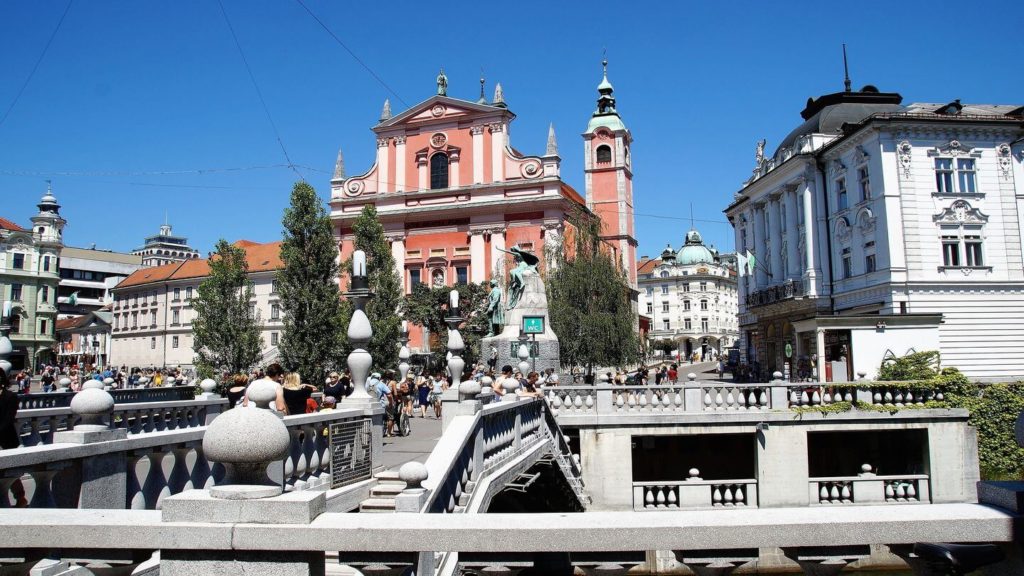

Join your Ljubljana Travel Director for a tour around the most iconic sights of Slovenia’s capital. Stroll through the Baroque facades of the Old Town and see the Gothic-style Town Hall. Cross the Three Bridges Square and admire the Cathedral of St. Nicholas, with its 18th-century frescoes.
Relax in Tivoli Park
Explore the green lungs of Ljubljana at Tivoli Park, where a maze of paths takes you through the lush gardens. You can see two historic mansions, the botanical gardens, a fish pond, and a glasshouse with tropical plants. Head to the heart of the park to find the Jakopič Promenade, where large photographs are displayed year-round.
If you’re up for some action, there’s mini-golf, tennis courts and even a bowling alley. You can also follow the web of trails leading into Rožnik Hill. When you get hungry, visit the bars and cafés throughout the park, or bring a blanket and enjoy a picnic in the sun.
Visit Ljubljana Castle


Head to the top of Castle Hill by foot or tram to see the grand Ljubljana Castle. Take a guided tour through the ancient rooms dating back to the 12th century and learn about the six most important periods of Ljubljana’s history. Climb up the 19th-century watchtower, with striking views over the city. After your tour, you can relax in the sunny courtyard café and restaurant.
Explore the museums and galleries
Don’t miss out on Ljubljana’s fantastic museums and galleries. Our favourites include the National Museum of Slovenia, housed in a neo-Renaissance palace dating back to 1885. The museum has a remarkable collection of treasures including thousands of Roman paintings, statues and stone monuments. You’ll even find a 60,000-year-old Neanderthal flute, thought to be the world’s oldest musical instrument.
The same building is home to the Slovenian Museum of Natural History. It features a superb collection of the world’s biodiversity, including one of Europe’s best-preserved woolly mammoth skeletons.
If you’d like to learn more about the traditional culture of Slovenia, visit the Slovenian Ethnographic Museum. It’s located in a former barracks complex in Ljubljana. The museum’s ethnographic collections date back to 1821 and showcase Slovenia’s traditional handicrafts like pottery, weaving, beekeeping, blacksmithing and glass-painting.
Take a boat ride down Ljubljanica river
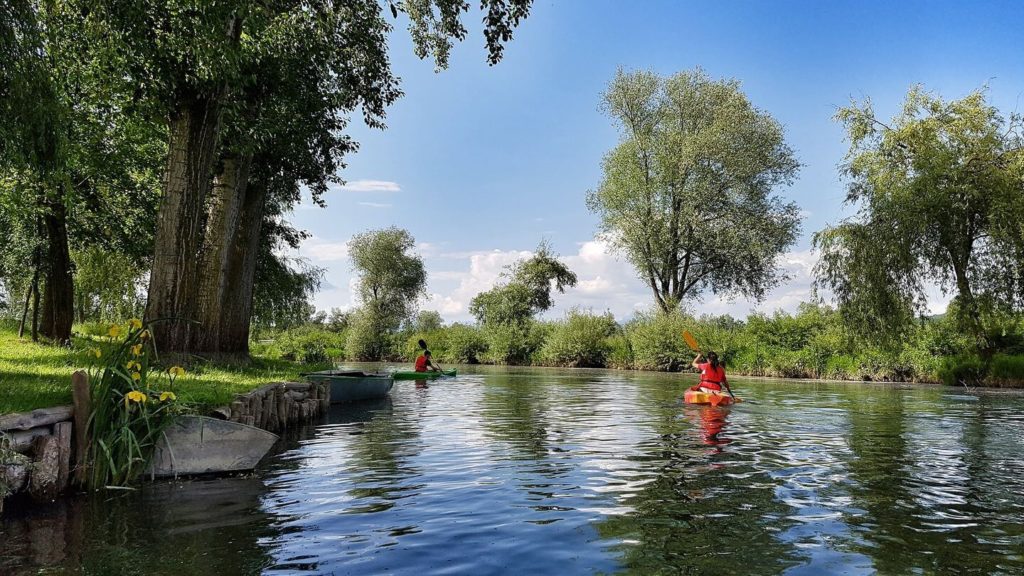

Take a romantic boat ride for the best views of the pretty Ljubljanica river. You’ll cruise the glittering waters under the famous Triple Bridge, Shoemaker’s Bridge and Dragon Bridge. This river cruise also passes by gorgeous houses built in Ljubljana’s Baroque style.
If you’re looking for unique things to do in Ljubljana, you can also go stand up paddling down the Ljubljanica river. It’s becoming a popular activity and is a fun way to see the city. After your trip down the river, spend some time wandering the riverbank of Ljubljanica. There are plenty of cafés where you can take a break and admire the beautiful views.
See the serene shores of Slovenia’s Lake Bled
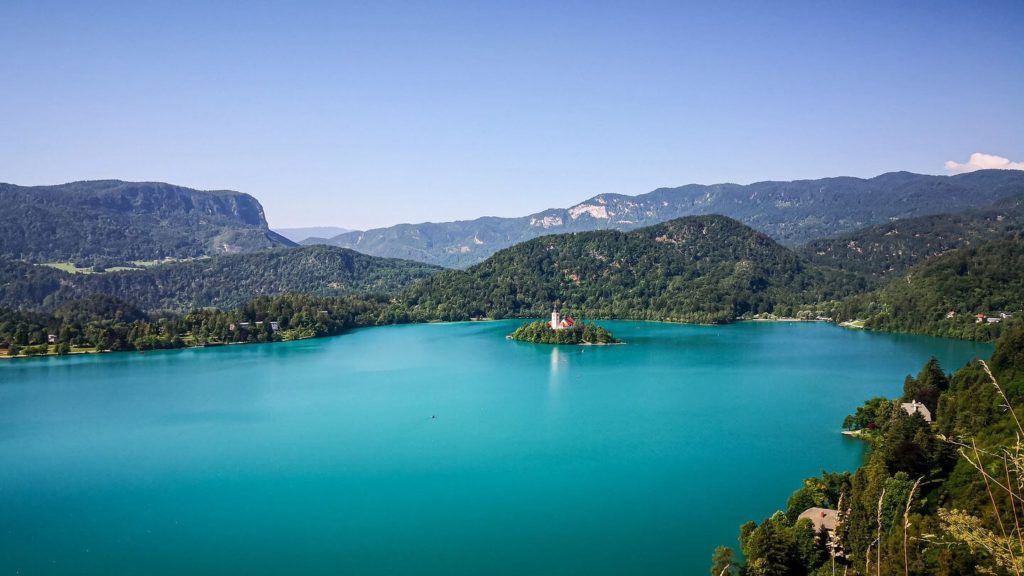

Journey to the exquisite turquoise waters of Lake Bled, one of the most enchanting places in Europe. Located an hour away from Ljubljana and surrounded by alpine forests and snowy peaks, you can take a ‘Pletna’ boat trip on the lake’s dazzling waters.
You’ll see Bled Island and the mystical Church of Assumption. You can also explore the ancient interior of medieval Bled Castle, perched on the cliffs overlooking the lake. It’s over 1,000 years old and thought to be the oldest castle in Slovenia.
GET INSPIRED BY: Best of Croatia and Slovenia
Appreciate the works at the Museum of Modern Art
The Moderna Galerija, Ljubljana’s Museum of Modern Art, has a collection of 20th century Slovene artwork on exhibit. Temporary exhibits rotate every six months or so but you’ll find a permanent collection of 1301 paintings, 502 sculptures, 11,069 drawings, 4,000 photographs, and 3,079 graphics prints.
Marvel at Lake Bohinj’s beauty
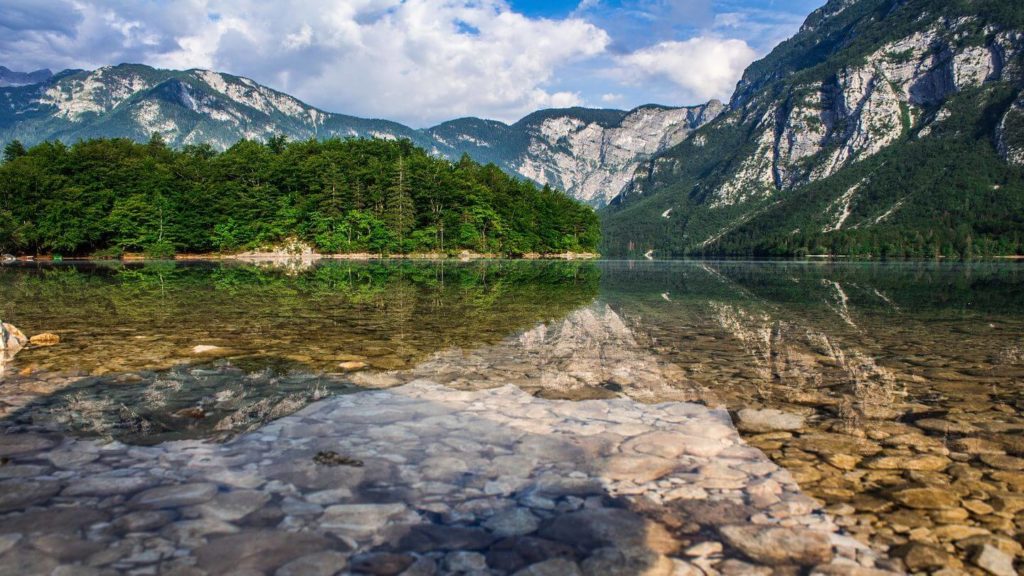

Lake Bohinj is the alpine jewel of Slovenia, with glittering glacial waters surrounded by stunning mountains. You’ll drive past emerald rivers, dense forests and charming mountain villages to reach the lake. You can admire the ornate 13th-century frescoes of St John’s Church on the shores of the lake.
Explore Postojna Caves
Venture deep below the Slovenian Karst to discover an underground world of limestone caves. You’ll travel by electric mini-train through the maze of ancient corridors, before exploring the huge caverns of Postojna Caves on foot.
Visit Radovljica


Radovljica is one of Slovenia’s most beautiful mountain villages, with medieval houses dating back to the 15th century. You can wander the pretty cobbled streets, or enjoy a meal at a traditional Slovenian inn. You might even get to watch a performance by local musicians.
Visit the famous Gingerbread museum, where you’ll discover the traditional Slovenian art of lectarstvo. You can watch a gingerbread making demonstration in the museum, housed in a centuries-old inn. Don’t forget to sample the freshly-baked treats!
RELATED CONTENT: Why you should travel to Slovenia in winter
Roll through the Railway Museum
The Slovenian Railway Museum, housed in a former Austro-Hungarian railway station, is a must-see for railfans. The collection of steam locomotives is the highlight of the visit, but that’s not to say that the “draisines” (light auxiliary rail vehicles), comms devices, and rare models aren’t interesting in their own right.
Serve your sweet tooth Slovenian cream cake (kremna rezina)
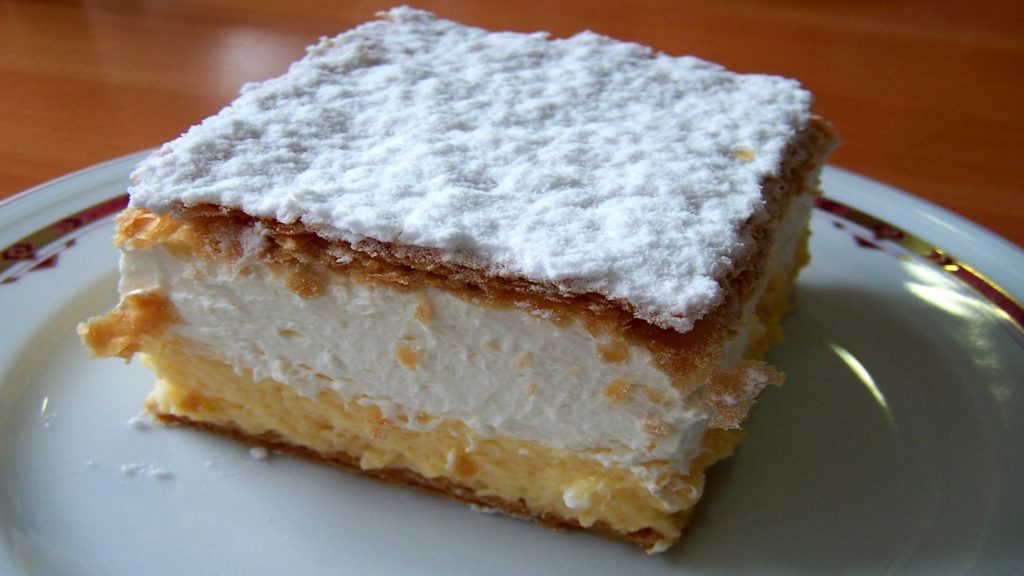

These creamy slabs of joy originated from Lake Bled, but they can also be found everywhere in Ljubljana. The cakes are made from thin and crispy puff pastry filled with custard cream and a wedge of whipped cream. They’re topped with icing sugar and are quite messy to eat, but everyone walks away with a big creamy grin. You’ll quickly become obsessed!
Munch on mouthwatering Štruklji
Štruklji are boiled dumplings made from dough and stuffed with all kinds of fillings. A mix of cottage cheese, spiced apples, and prunes or raisins are the most popular filling. Moji Štruklji Slovenije is the best place to try this dish in Ljubljana. You’ll find over 20 flavours including sweet, fruity, savoury and gourmet varieties, as well as the traditional štruklji.
Get a potica and coffee to-go


Found in bakeries and cafes across Ljubljana, Potica is a beloved Slovenian dessert. This traditional yeast-dough cake is baked in a special mould called potičnik. It’s made with a variety of fillings and there are more than 80 known fillings including sweet and savoury options. The most popular is a mix of walnut, tarragon, hazelnut, poppy seeds and pumpkin seeds.
Dine with friendly locals at Open Kitchen Market
Open Kitchen Market is one of the best things to do in Ljubljana if you’re keen to meet the locals, eat great food and soak up the city’s atmosphere. It’s open every Friday from spring to autumn and serves up some of Ljubljana’s best local treats.
You’ll find everything from fresh fruits and vegetables to tasty street food, along with international delights. Wineries and breweries also come from all over the country come to serve their creations.
Explore Ljubljana and visit Lake Bled during our Highlights of Eastern Europe tour.
FAQ
How do you pronounce ‘Ljubljana’?
Ljubljana is pronounced “loo-blee-aa-nuh”. It’s derived from the Slovene word ljubljena meaning “loved”. The city was first settled in the 1st century, though the city as it’s known today didn’t originate until the 12th century when it was called “Laibach” (lai-bak). Ljubljana became the capital of newly independent Slovenia in 1991.
What language is spoken in Ljubljana?
Ljubljana speaks the official language of Slovenia: Slovene, or Slovenian in English. English is spoken throughout the city, but if you’d like to impress locals with your interest in this Slavic language, consider adding these words to your traveling vernacular: Hello is zdravo, I’m sorry is Žao mi je, please is molim te, thank you is hvala ti, and goodbye is zbogom.
How many days should I spend in Ljubljana?
When you’re on a whirlwind tour of Europe, it’s common for tours to spend one to two days in Ljubljana. This offers a nice introduction to the city’s history and culture, but you should consider staying two-to-three days at very least. You’ll want ample time to wander the central market and sample traditional Slovenian food. With time on your side, you can swap public transport for aimless walks down Trubarjeva Cesta and Locksmith Street. With two or three days in the city, you can stumble on lesser-visited sites like the Metelkova mesto art center and the unique cyanometer that measures the blueness of the sky.
What are your favourite things to do in Ljubljana? Let us know in the comments below…